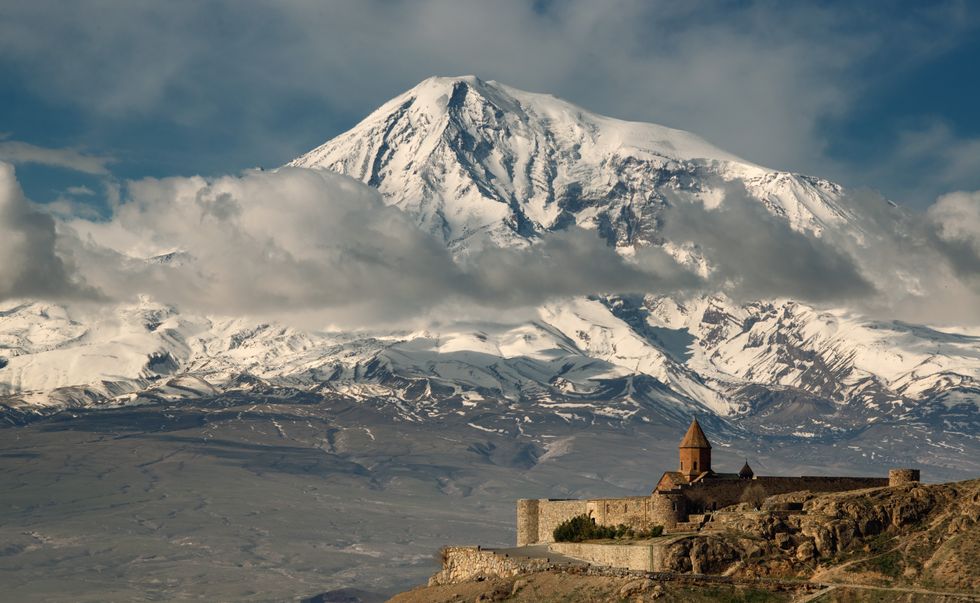'The location lies in an active earth flow with harsh winters, so protecting the area is our top priority,' an expert has said
Don't Miss
Most Read
Archaeological researchers are embarking on a scientific quest to prove the existence of Noah's Ark in Turkey.
The team at Noah's Ark Scans are investigating a site just 30 kilometres south of Mount Ararat.
They believe this location could solve one of religion's greatest mysteries.
The researchers are focusing on the legendary Durupinar formation, which has long been speculated to be the final resting place of the biblical vessel.

The Durupinar formation has long been speculated to be the final resting place of Noah's Ark
Getty
The geological structure at the centre of their investigation measures 538 feet and is made of limonite.
This boat-shaped formation closely resembles the dimensions of Noah's Ark as described in the Bible.
While experts have yet to officially confirm the ark's existence, the Noah's Ark Scans team told The Sun they are confident of uncovering the truth in coming years.
They have already developed detailed excavation plans for what they call the "boat site".
Operations at the site haven't begun yet, with the team prioritising careful planning and non-destructive testing.
Top researcher Andrew Jones explained: "The location lies in an active earth flow with harsh winters, so protecting the area is our top priority."
Turkish university partners will first conduct soil sampling and radar scans to determine if the structures are man-made.

Noah's Ark is a key story in the Bible
GETTY"Only after we gather enough evidence and have a proper preservation plan in place will we consider excavating," Jones added.
The team have already received promising results from initial testing at the site.
Turkish geologist Doctor Memet Salih Bayraktutan collected 22 soil samples from inside and outside the "boat shape" last year.
Analysis at Ataturk University in Erzurum revealed lower pH and higher organic matter inside the structure.
There was also noticeably more potassium inside compared to outside.
"These changes are consistent with rotting wood," according to the research team.
They also observed that grass inside the formation turns lighter and more yellow in autumn.
 The Bible has also said that Noah’s Ark managed to settle on the Mountains of Ararat which, again, is a similar region where the remnants were discoveredGETTY
The Bible has also said that Noah’s Ark managed to settle on the Mountains of Ararat which, again, is a similar region where the remnants were discoveredGETTYIn October 2019, a full ground-penetrating radar scan was conducted at the site using two antenna frequencies.
This technology sends electromagnetic waves into the soil that bounce back when they hit objects.
Jones described the GPR as "a non-invasive peek into the past".
Initial scans revealed rectangular shapes about 22ft below the surface.
An American geophysicist later re-examined the data and claimed to find a long hallway opening into a large central space.
Researchers believe these could be open cavities inside the formation.
The Noah's Ark Scans team now plans to drill carefully into the formation to investigate further.
They hope to create a small opening and use a camera to see inside without causing damage.
"We also plan to take core samples from across the formation, which should help us confirm whether the right angles and geometric patterns we see on the GPR scans are man-made structures or just natural formations," Jones said.
"So far, our results support our theories. The soil tests suggest this formation isn't simply part of the surrounding mud flow - it's a distinct object."














